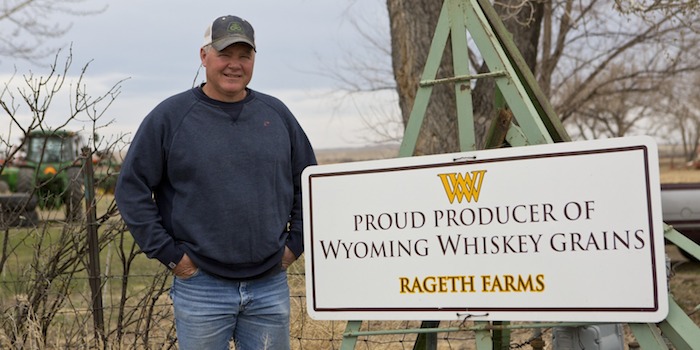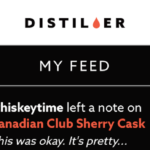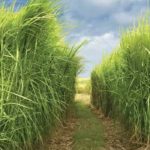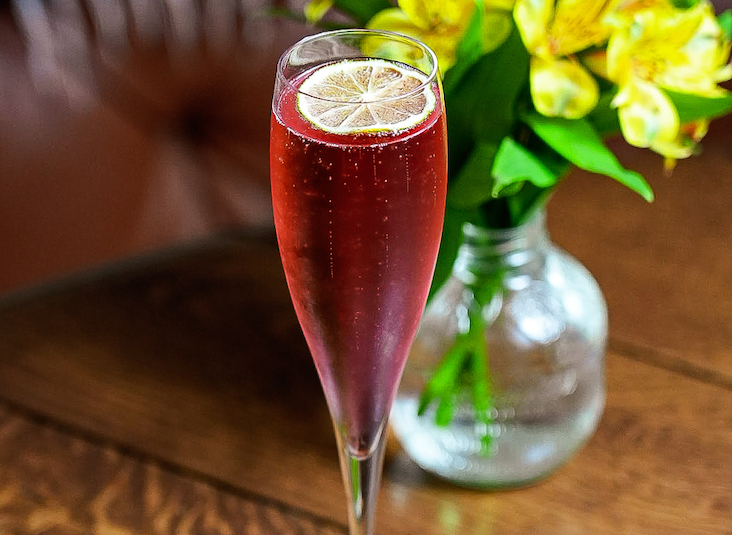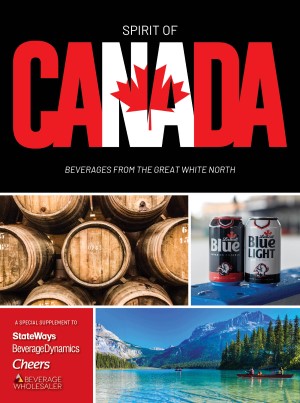Craft expressions of the American spirit take on the taste of their terroir.
Whiskey is now made locally, everywhere in America. Numerous distilleries have popped up in the past three years. And the flavors differ from state to state, based on the terroir.
The founders of Hudson Whiskey had not intended to produce craft spirits. The company operates on New York farmland originally purchased ten years ago to become a rock-climbing ranch.
But neighbors balked at that proposal. So Ralph Erenzo and Brian Lee instead established the first distillery in New York since Prohibition.

The popularity of Hudson Whiskey recently led to the release of its new 750-ml. bottle, after originally offering only a 375-ml. expression.
This required a lengthy legal process. In 2007, Erenzo and Lee worked with politicians to finally changed state law—easing the prohibitively expensive distillery-license fees—and opened Tuthilltown Spirits Farm Distillery in Gardiner, New York.
Erenzo and Lee also achieved a mandate that all spirits made by New York farm distilleries include at least 75% local agriculture. Today, their top products Baby Bourbon and Manhattan Rye—full of local flavors—are both available nationwide in 750-ml. bottles for around $50 each.
The genesis of Hudson Whiskey is a story — albeit a bit longer and circuitous — now playing out nationwide. Whiskey production has branched out far beyond its American roots in Kentucky. Distillers across the country are releasing new expressions, distinct for their use of local resources.
Water, Water Everywhere
Water fills a number of critical roles in whiskey making. It’s used in steeping, mashing, cooling and dilution. It’s no surprise that distilleries across the country count their local water as a differentiator.
Kentucky’s limestone water, of course, is much celebrated by whiskey enthusiasts. The high Ph level stimulates fermentation, while the minerals aid in spirit composition and taste. The limestone helps filter out impurities like iron, which can badly damage final product.
Kentuckians are justified to point out the high quality of their water. But they do not alone boast such a resource. Excellent H20 exists elsewhere.
Wyoming Whiskey is a craft distillery in Kirby, WY, that launched its first expression in 2012. Their flagship product, of the same name, was originally available only in western America, but is rapidly expanding elsewhere. It retails for approximately $45 per 750-ml. bottle.
Built into the company’s mission statement is the goal to use “regional ingredients,” while promoting Wyoming’s natural resources. This includes the Madison Formation, a vast stretch of carbonate rocks, which in Wyoming are above a mile-deep limestone aquifer.
“This is water that hasn’t seen the light of day in 6,000 years,” explains David DeFazio, Chief Operating Officer/Founder of Wyoming Whiskey. “It gets entered into water drinking competitions and finishes in the top for Wyoming, every year.”
When planning his distillery, DeFazio was initially unsure where he’d obtain water. Then he heard about the natural aquifer 60 miles north of Kirby. Wyoming Whiskey trucked in 6,000 gallons of this water per week for four years. Finally, a new pipeline extended into their town.
“It’s all about the minerals and the limestone,” DeFazio says. “They’re a natural filter that removes undesirable chemicals and pumps out a sweet water.”
The Wyoming aquifer also allows the distillery to craft whiskey with a pronounced and pleasant minerality. “It’s become apparent to me that great water is the foundation of great whiskey,” DeFazio says.
Matt Hofmann would agree. He is master distiller for Seattle’s Westland Distillery, maker of American single malts, which released its first product in 2013. Their spirits are now available in most major markets, for an approximate retail price of $55 per 750-ml. bottle. Hofmann and his team create whiskey using water from the Cedar River Watershed, the municipal source for Seattle.
“This is the least-polluted, least-treated metropolitan water,” he states. “It gathers water from snow runoff from the Cascade Mountains. The mineral content is neutral. It’s perfect whiskey-making water.
“The Kentucky people say you need limestone to filter out minerals,” Hofmann adds. “But all those minerals are already filtered out of our water. You don’t have to do that. We can work with 100% unfiltered water.”
Friends with Farmers
These non-Kentucky distilleries lean on another local resource: farmers.
Hudson Whiskey has found success — its 375-ml. apothecary bottles are ubiquitous to chic northeastern bars — thanks to creative crop-raising. The company uses a hybrid old-Indian heirloom corn that they believe produces sweeter sugars and superior proteins.
It’s a hardy corn, but does not provide an optimal yield. Area farmers who grow this crop would not do so under normal circumstances.
“We’ve created a symbiosis with the local farmers,” explains Han Shan, Hudson Whiskey brand ambassador. “We lease their land. That way, if there is any issue with the crops, it’s on us.”
“The farmers in return have increased their allocation for heirloom corn,” he adds. “They’ve been watching how well Tuthilltown Distillery has been succeeding, so they’re feeling more secure.”
Westland Distillery also deals directly with local farmers—and scientists.
“We’re working with Washington State University to breed higher-yielding barley,” Hoffman says. “We’re looking at many different varietals of barley. You can only do that with the full cooperation from the entire chain of production.
“We’re the best barley growing state in the U.S.,” he adds. “Our climate is similar to the British Isles.”
Westland also works with a local peat bog for its single malts. “It gives us a unique and distinctive flavor,” Hoffman says.
Wyoming Whiskey sources 100% of its grains from within 100 miles of the distillery. These crops are not genetically modified. “It’s more expensive, but it feels right,” DeFazio says.
Crater Lake Spirits in Oregon takes it a step further. Founded in 1996, the company today produces a wide range of spirits, including a rye whiskey, on a 24-acre facility that includes its own farmland, grain silos and milling departments.
“We grow our own rye,” says Lead Distiller Lean Glaser. “This allows us to change the flavor profile every year for the grain. There’s a lot more control of the process, from start to finish.”
“We mill our own rye in-house and then mash it the same day,” he adds. “A lot of distilleries cannot do all that in-house. We go ground-to-bottle, onsite. We do everything but harvest the sand and blow the glass bottles ourselves.”
Crater Lake Spirits chose rye in part because they believe it grows better in their high desert climate than other grains. Their rye whiskey retails for approximately $30 per 750-ml. bottle, available nationwide.
Aging Differently
Whiskey flavor relies greatly on aging. Where distillers store their barrels makes a considerable impact on the final spirit. And atmospheres differ from state to state.
“The aging element is really conducive to our whiskey,” says Crater Lake Spirits owner Alan Dietrich. “Alcohol spends most of its life aging. The hot days and cool nights of Oregon make a big difference. The temperature can vary 50 to 60 degrees per day.”
When Oregon temperatures spike during daytime, whiskey expands and seeps out of barrel wood. At night, this liquid is sucked back in. “There’s a lot more of that going on here than in other places,” Glaser says. “It imparts a lot of flavor.”
Crater Lake Spirits counts this among their advantages. “It would be too expensive to artificially reproduce this temperature flux process elsewhere,” Dietrich says. “It’s my gut feeling that one year of aging in the high desert equals three years of aging in Kentucky.”
This allows the distillery to release its rye after just one year in barrels. And that means the whiskey retains more of its natural spicy, peppery characteristics, Glaser says, as those qualities would lessen over time while aging. “You’re seeing brighter, more-flavorful whiskeys coming out of the west,” he observes.
North, in Seattle, the coastal climate is noticeably different. “It’s like a temperate rain forest,” says Hoffman, of Westland Distillery. “We get 150 inches of rain per year. A heat wave is 75 degrees. And it’s never cooler than 40 degrees.”
“It’s a unique environment,” he adds. “And we’re not insulating our rack house. That alone makes our whiskey distinct.”
In Wyoming, the arid heat means greater alcohol evaporation, for a higher angel’s share. Wyoming Whiskey hoses down the rack house floors to help lessen this loss.
Of the Land
These non-Kentucky distilleries take pride on producing whiskey that tastes unlike it was from the Blue Grass State.
“Kentucky bourbons use a proprietary yeast, which is all very similar in how it’s made,” explains Wyoming Whiskey’s DeFazio. “And there’s a lot of horse trading back east. This creates a community among all the bourbons.”
“We stand alone,” he continues. “We were not given the benefit of having that proprietary yeast. We had to try a myriad of different yeasts in an old moonshiner’s still until we got it right. Every drop we make, we own it. And Wyoming owns it.”
“Terroir is an unquantifiable element,” he notes. “At the end of the day, it makes our whiskey way different.”
Hoffman concurs. “It’s all about what we get out of our Washington State ingredients,” he says. “You can make good anything anywhere. We have things that make us distinct. That’s why we’re comfortable giving out our recipes, because of all the little things that go into them.”
“We believe very strongly in Washington State as a big part of what we are,” he adds. “And it gives our whiskey a more interesting story.”
For Crater Lake Spirits, “it really is an extension of our brand, trying to be as locally based as possible,” Dietrich says.
Shan agrees that the whiskey “tastes like what it’s made of.”
“We believe that there’s a terroir to product, just like with wine,” he says. “Because it’s not just with grapes. You can get terroir from grains, from local water. We found the essence of that heirloom corn and we kept it throughout the process.”
While these new craft distilleries opening nationwide are eager to take in local resources, so too does the relationship extend the other way.
“We’re creating real jobs and supporting the local tax base,” Shan points out. “We’re making a very real, very positive impact.”
Kyle Swartz is the associate editor of Beverage Dynamics. Reach him at kswartz@epgmediallc.com
Featured photo atop: Wyoming farmer Brent Rageth produces grains for Wyoming Whiskey.

